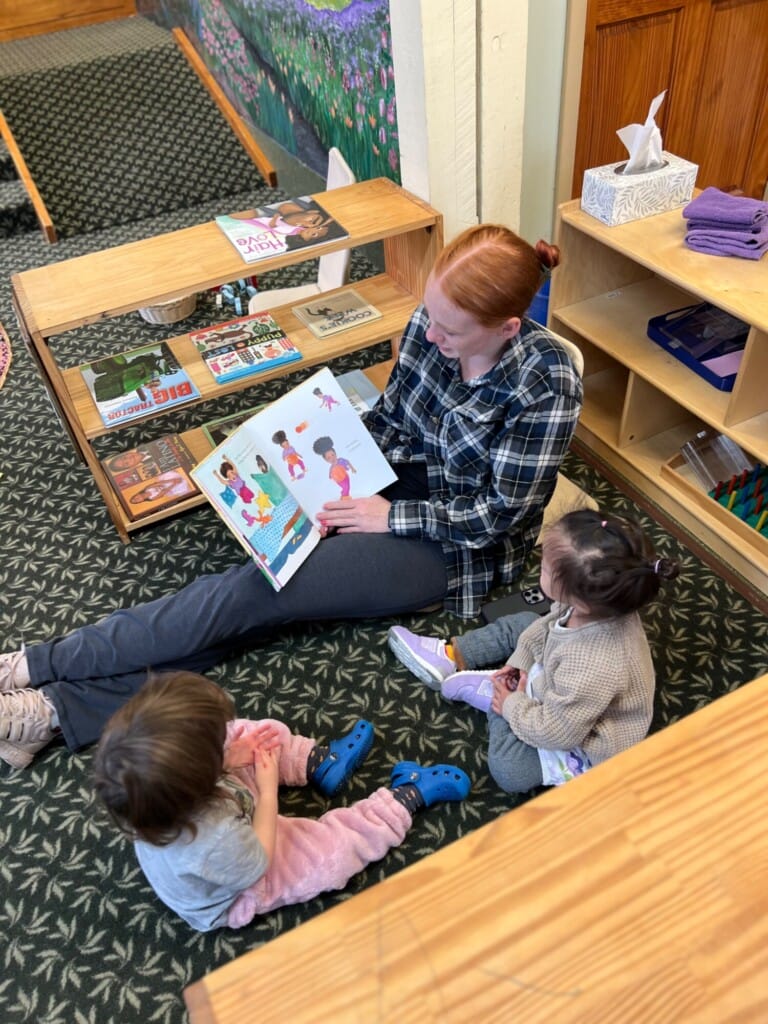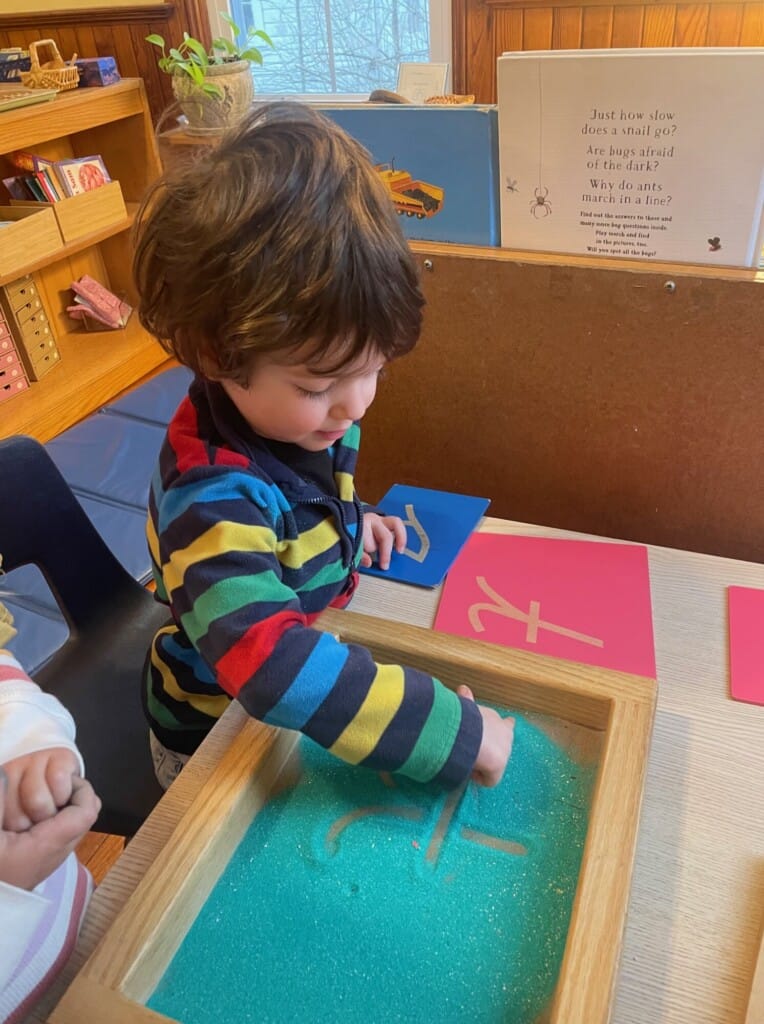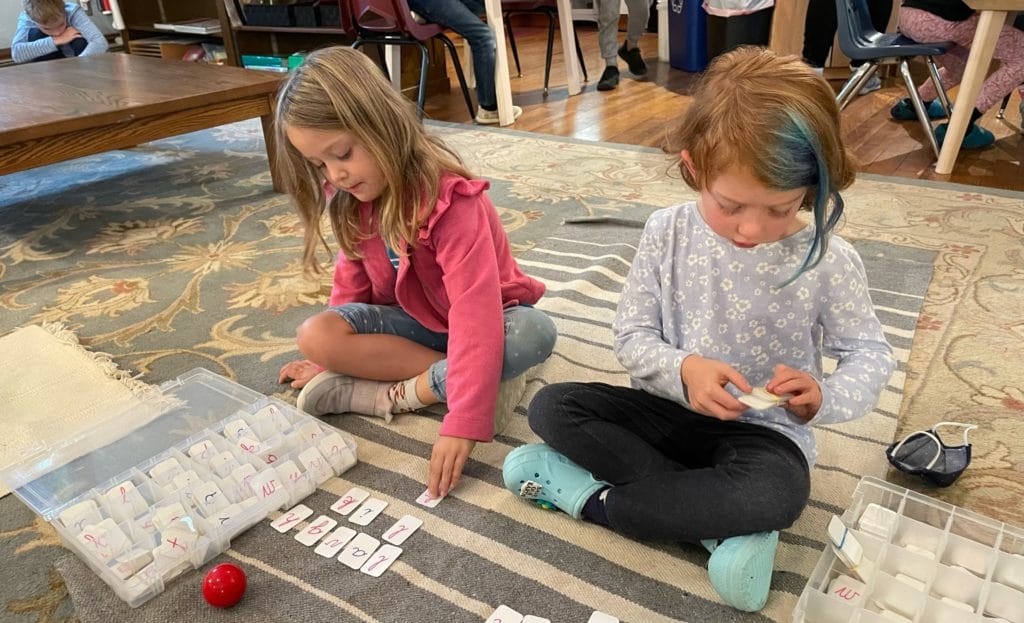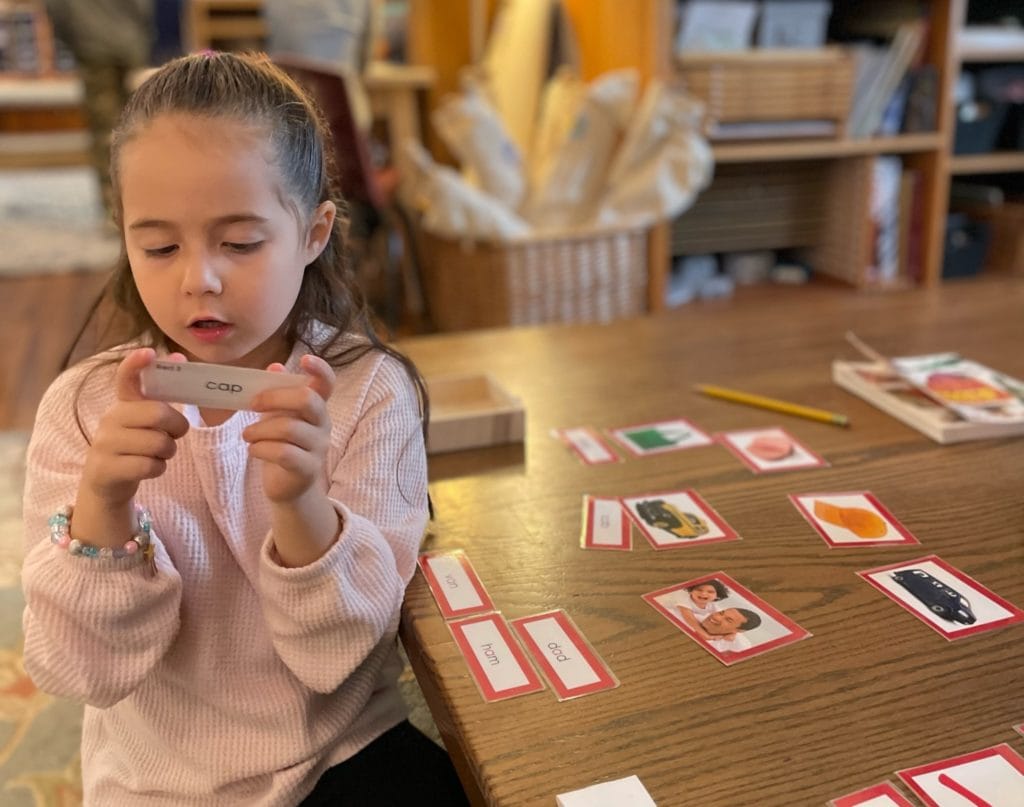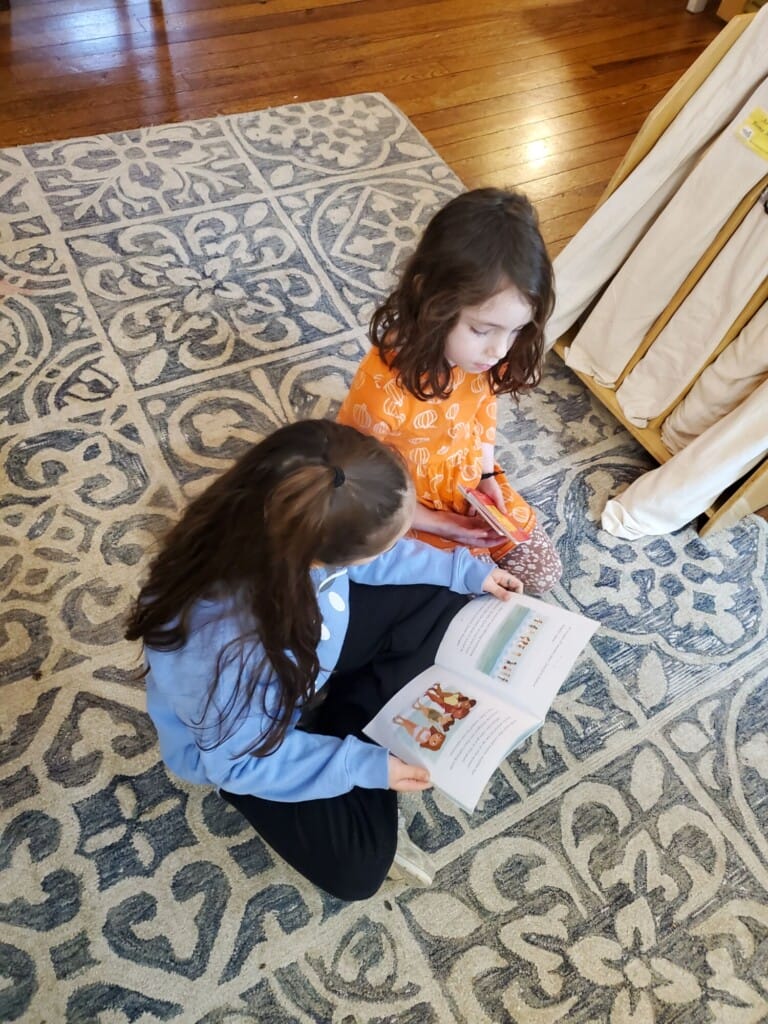At the Primary level phonemic awareness is taught through hands on activities and games, the alphabet is learned with fun and interesting sorting and matching works; handwriting is practiced through tracing shapes, sandpaper letters, and using chalkboards; moveable alphabet letters are used for writing words, and labels are used all over for word recognition. Reading for four or five year old children in a Montessori program usually follows an immersion in writing activities, mostly done using the moveable alphabets. The children spontaneously synthesize all of the phonemes they have learned and the sight words they have been given and often discover one day that they can read! In addition to a wide range of suitable fiction and non-fiction books in each classroom, there are vocabulary cards in relation to every subject area (nomenclature of everyday objects, geometry, science, world cultures, etc.).
Enrichment of vocabulary across the curriculum is a constant focus in the Primary classroom. Another daily occurrence is reading aloud to the children as a group. Introductory activities in areas of grammar, syntax and word study form a part of the early language work. Dr. Maria Montessori described the five to seven year old children as “word lovers,” such was their great interest in language at this age. The concepts of noun, verb, preposition, subject, direct object, etc. are introduced in playful activities using a miniature environment and a variety of movement games. The Montessori grammar symbols used throughout the Elementary Program are first introduced at this age.

